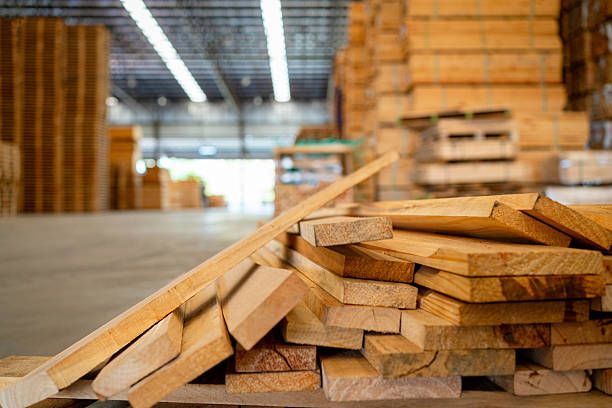Interior spaces tell stories through their surfaces. The wood grain that catches morning light, the matte finish that softens a room’s edges, or the glossy veneer that adds depth to cabinetry—these details shape how people experience their environments. Decorative plywood has evolved from a purely functional material into a design element that architects and homeowners rely on for creating memorable spaces.
Understanding Decorative Plywood Production
- Manufacturing Excellence in Specialised Facilities: The Yamuna Nagar plywood factory region has become known for producing decorative plywood that meets strict quality benchmarks. These facilities use precision machinery to apply veneers uniformly, ensuring each sheet maintains consistent colour and texture. The process involves careful selection of face veneers, controlled pressing temperatures, and multi-stage sanding that creates surfaces ready for finishing treatments.
- What Sets Decorative Plywood Apart: Regular plywood prioritises structural strength, using core veneers that may have natural imperfections. Decorative variants focus on the outermost layers, where flawless face veneers undergo special treatments. Manufacturers sort timber based on grain patterns and natural colouring before slicing it into thin sheets. This attention to surface quality means decorative plywood costs more but delivers visual appeal that justifies the investment.
Current Surface Finish Trends
- Natural Wood Veneers Versus Engineered Options: Today’s market offers real wood veneers from species like teak, walnut, and oak alongside engineered alternatives. Natural veneers bring unique grain patterns—no two sheets look identical. Some prefer this organic variation. Others choose dyed or stained finishes that provide colour consistency across large installations. Both approaches have merit depending on project requirements and aesthetic goals.
- Texture and Sheen Preferences: Matte finishes have gained popularity in modern interiors because they hide fingerprints and reduce glare. Glossy surfaces still work well for accent pieces where light reflection adds drama. Textured finishes replicate hand-scraped wood or brushed effects, adding tactile interest. The choice depends on how the space gets used and what mood designers want to create.
Matching Finishes to Interior Styles
- Design Applications Across Different Aesthetics: Minimal interiors benefit from light-coloured plywood with uniform grain patterns and matte finishes. These create calm, uncluttered backgrounds that don’t compete for attention. Rustic designs need darker stains and pronounced wood grain that suggests age and character. Contemporary spaces mix smooth and textured surfaces, playing with contrast.
- Luxury Furniture and Panelling Requirements: High-end projects demand flawless finishes. Wall panelling in hotel lobbies or executive offices can’t show sanding marks or colour variations. Manufacturers grade decorative plywood strictly, rejecting sheets with even minor surface defects. The face veneer thickness matters too—thicker veneers allow for potential refinishing years later, extending the material’s lifespan.
- Practical Considerations for Long-Term Performance: Surface finish affects maintenance needs. Glossy plywood shows scratches more readily than matte alternatives. Textured surfaces trap dust in their grooves, requiring regular cleaning. Open-grain finishes need sealing to prevent moisture absorption. These factors influence material selection based on whether the plywood will be used for kitchen cabinetry, bedroom wardrobes, or reception area panelling.
Care Guidelines for Decorative Surfaces
- Maintenance Practices That Preserve Appearance: Decorative plywood needs gentle cleaning with soft cloths and mild solutions. Harsh chemicals strip protective coatings and damage veneers. Direct sunlight fades colours over time, so UV-protective treatments help in sun-exposed areas. Spills should be wiped quickly—standing water can cause veneer edges to lift or create dark stains that penetrate the wood.
- Protection During Installation and Use: Proper handling prevents surface damage before installation. Storage in climate-controlled spaces stops warping. During fitting, protective film keeps surfaces scratch-free until project completion. Once installed, felt pads under furniture legs and coasters on surfaces prevent marks that diminish the decorative appeal homeowners paid to achieve.
Decorative plywood’s surface finish directly impacts how interiors look and function over years of use. The right combination of veneer type, texture, and sheen creates spaces that feel intentional and well-crafted. Careful material selection and proper maintenance ensure these surfaces retain their beauty long after installation. Consider speaking with experienced suppliers who can match decorative plywood specifications to specific design requirements and usage conditions.
Featured Image Source: https://media.gettyimages.com/id/2235051820/photo/stacked-lumber-folded-wood-closeup-wooden-boards-the-surface-of-the-end-of-the-board-lots-of.jpg?s=612×612&w=0&k=20&c=if_HIPRas3V2PiNIqQq2cWRsE0uyD65gWV_cFJc2vaE=
